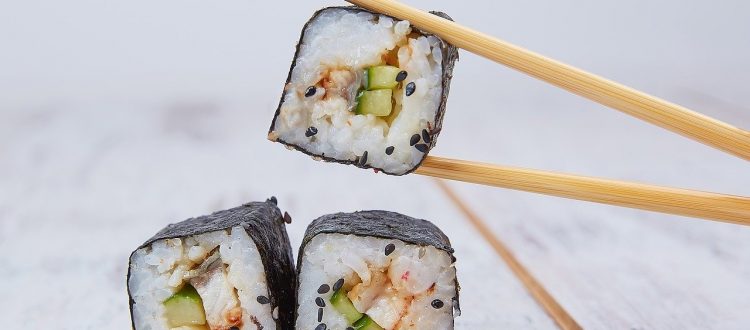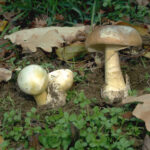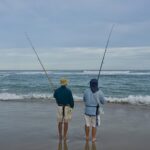
The Food Safety Information Council today alerted consumers about food safety risks, especially from parasites, in preparing your own raw fish dishes such as sushi, sashimi, ceviche, gravlax and cold smoked salmon. If learning how to make your own sushi has been one of your #quarantinegoals, consider where you source your ingredients, how you handle them and how you store both your ingredients and your final masterpiece.
Cathy Moir, Council Chair, said that fish is an important part of a nutritious diet and we should be consuming 2 to 3 serves of it each week. However, like any raw food, there can be some safety risks from raw fish dishes. She urged budding raw-chefs following global e-learning trends to keep both themselves and dinner-party guests safe.
‘There are food safety rules governing the raw fish dishes that you buy from a food outlet but, if you prepare them yourselves, remember that raw fish can be a hazardous food and can be a source of infection from parasites. Traditional additions to raw fish dishes such as vinegar, lemon juice or salt will not kill the infectious stages of parasites.
‘There is evidence that seafood parasitic illness is increasing around the world, although currently not widely reported in Australia. This increase may be due to a greater consumption of raw and undercooked wild caught fish, the fact that fishing boats throw more fish waste overboard and growth in numbers of sea mammals, such as seals, whales and dolphins, which are the major hosts of the anisakid parasite and lead to wild fish contamination.
‘Symptoms of parasitic infection are wide ranging and can include stomach ache, vomiting, diarrhoea, as well as allergic type reactions such as tingling tongue, cough, a strange rash, heart palpitations or even anaphylactic shock. Symptoms can occur within six hours or up to a week after consumption. Allergic symptoms can occasionally be immediate. Some of these symptoms may be prolonged or become chronic until the parasite is physically evicted from the body or appropriate treatment is prescribed by your doctor.
‘If you want to prepare raw fish dishes yourself follow these 6 simple tips:
- Know your source: source good quality fish from a reputable supplier that uses the Australian Fish Names Standard so you know what type of fish you are buying.
- Avoid that home catch: it is best not to use recreational fish caught personally or by friends in raw fish dishes.
- Freeze it: freezing the fish for a minimum of seven days (longer for large fish) will kill parasites. It’s important to know from your retailer if the fish you are purchasing has been frozen and for how long. Remember that freezing will not kill food poisoning bacteria or viruses or prevent allergic reactions from parasites.
- Wash your hands: before and after preparing the raw fish wash your hands with soap and water for 20 seconds and dry thoroughly.
- Wash your tools: make sure all utensils and chopping boards are thoroughly washed in warm soapy water and dried. Take particular care to scrupulously clean bamboo rolling mats for sushi; they should be scrubbed using a brush with soap under hot water to remove any food residue and left to dry thoroughly.
- Cool rice quickly: remember that sushi rice can also be a food poisoning risk as toxins can form if it cools slowly. Follow sushi recipes carefully, especially the amount of vinegar to be added, and once cooked divide the rice into small containers, cover and cool in the fridge. This is generally one of the most important food safety issues for sushi.
‘Pregnant women, the elderly and people with poor immune systems should not eat raw fish dishes or cold cooked prawns and cold smoked fish because of the potentially fatal risk of the food poisoning bacteria Listeria. This applies whether the raw fish dishes are bought commercially or prepared at home. A safer alternative for these groups is to cook any fish or seafood to at least 63°C in the centre using a thermometer.
‘We should all have more fish in our diets, and both raw and cooked sea foods are a great way of including more Omega 3 and 6 in our routine. Doing so safely doesn’t need to be a chore. When these points become part of food-prep habits, we roll up fun, safety and insta-worthy plates into one great evening,’ Ms Moir concluded.
Thanks to Associate Professor Shokoofeh Shamsi, Charles Sturt University for her expertise in fish parasites.
Media contact:
Lydia Buchtmann, Food Safety Information Council, 0407 626 688 or info@foodsafety.asn.au
For more information see:
Parasites in Seafood fact sheet



